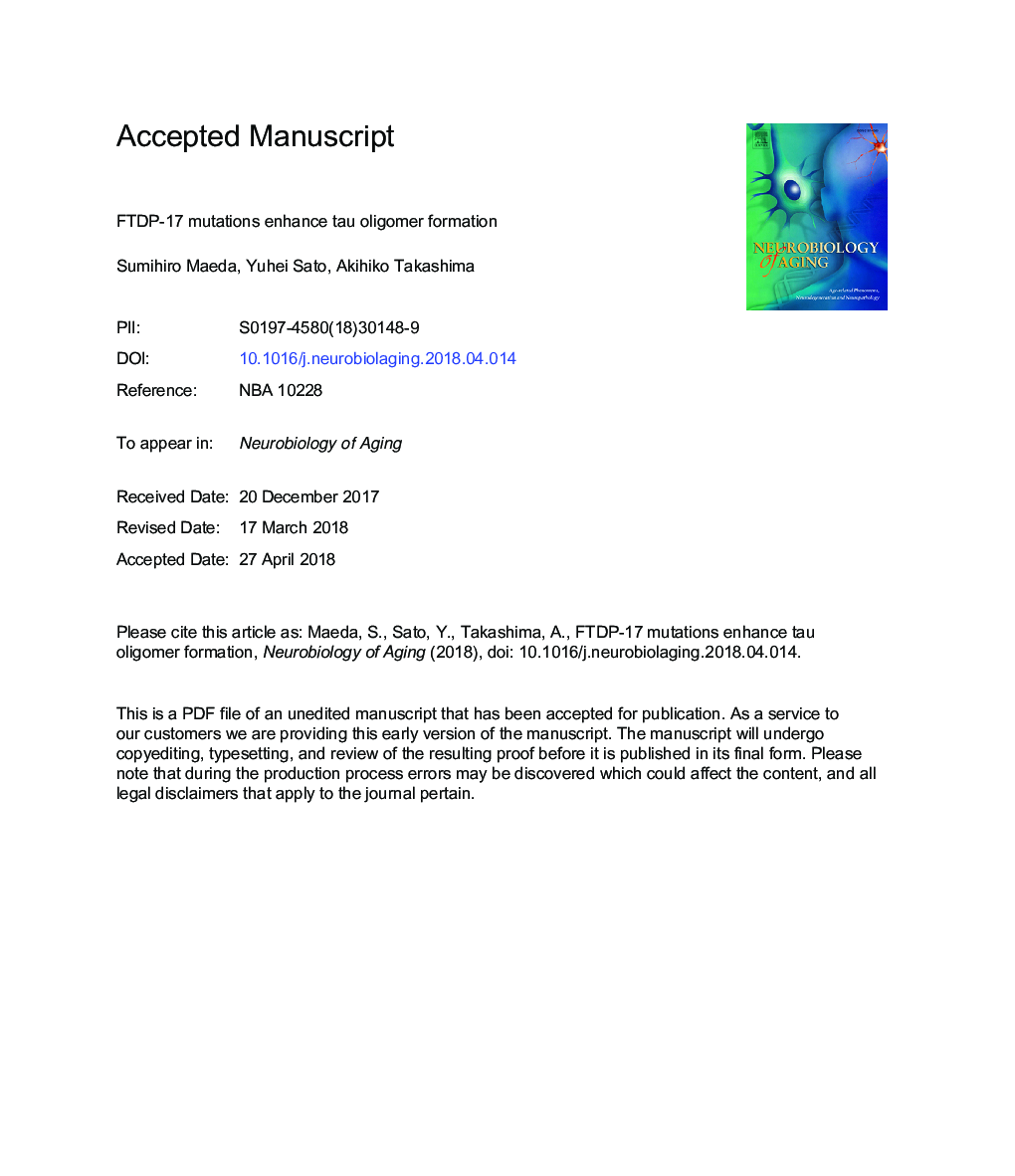| Article ID | Journal | Published Year | Pages | File Type |
|---|---|---|---|---|
| 6802813 | Neurobiology of Aging | 2018 | 21 Pages |
Abstract
The P301Â L mutation in tau, a microtubule-associated protein, causes frontotemporal dementia with Parkinsonism linked to chromosome-17 (FTDP-17) that is accompanied by formation of filamentous polymers of tau. The mutation reduces the binding capability of microtubules and enhances tau filament formation. However, it is unclear whether the P301Â L mutation increases the formation of the intermediates of tau filaments that are suggested to be a toxic species of tau. To determine the amount and structure of the intermediates harboring with the P301L mutation, we purified recombinant versions of wild-type, P301L, and 4 other mutants (i.e., P301S, P301T, V337M, and R406W) tau proteins and analyzed the heparin-induced aggregation of those tau constructs. We found that all of the FTDP-17 mutants increased levels of the intermediate tau oligomers. The sizes were determined by atomic force microscopy and laser light scattering. The V337M and R406W oligomers were similar in size to the wild-type, but the P301L, P301T, and P301S mutants formed smaller oligomers. In a P301L transgenic mouse model, we found tau aggregates that were similar in size to the recombinant tau oligomer. These results indicate that FTDP-17 mutations contribute to the pathogenesis via the increased formation of tau oligomers.
Related Topics
Life Sciences
Biochemistry, Genetics and Molecular Biology
Ageing
Authors
Sumihiro Maeda, Yuhei Sato, Akihiko Takashima,
